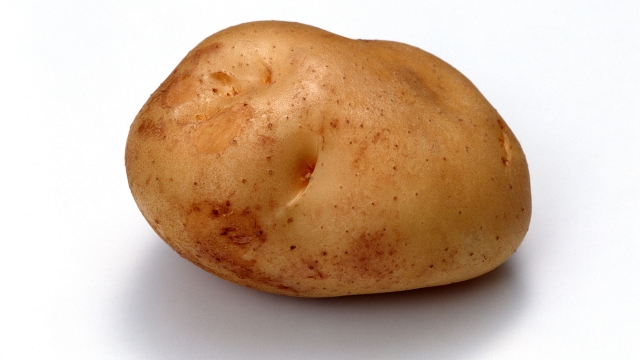The Spud Saga: A Guide to Successful Potato Planting
As we embark on our spud saga, let us delve into the world of potato planting. There is something magical about the process of growing these versatile tubers, from the simple act of placing a potato in the ground to the joyous anticipation of harvesting a bountiful crop. Whether you are a seasoned gardener or a first-time planter, this guide aims to equip you with the knowledge and tips necessary for successful potato planting.
Potatoes, with their humble origins and hearty nature, have remained a staple crop for centuries. Their adaptability allows them to thrive in various climates and soil conditions, making them an excellent choice for growers of all levels. In this article, we will explore the intricate details of potato planting, from selecting the right varieties to nurturing the plants throughout their growth journey.
While potatoes can certainly hold their own in a garden, it’s worth noting that they also have some preferred companions. Certain plants complement potatoes by deterring common pests or enhancing their growth. By understanding the concept of companion planting, we can harness the power of these natural partnerships to create a flourishing potato patch. We will uncover the best companions for potatoes and discover how their mutual support can result in healthier plants and higher yields.
So, prepare to don your gardening gloves and embark on a spud-filled adventure. With this guide as your trusty companion, you will soon be on your way to mastering the art of potato planting and reaping the rewards of your laborious efforts. Let’s dive into the mysteries of the spud and unlock the secrets to a fruitful potato harvest.
Selecting the Right Potato Varieties
When it comes to potato planting, one of the most important decisions you’ll need to make is selecting the right potato varieties. With so many options available, choosing the varieties that best suit your needs can greatly impact the success of your potato crop.
The first factor to consider is your local climate. Some potato varieties thrive in cooler climates, while others prefer warmer temperatures. Ensure you choose varieties that are well-suited to the average temperatures and growing conditions in your area.
Next, you should consider your intended use for the potatoes. Are you looking for varieties that are great for baking, mashing, or frying? Different potato varieties have varying textures, flavors, and cooking qualities, so select varieties that align with your culinary preferences.
Lastly, don’t forget to consider disease resistance. Some potato varieties are more susceptible to common potato diseases such as blight or scab. Choosing disease-resistant varieties can help minimize the risk of your potato crop being affected by these common ailments.
By carefully selecting the right potato varieties based on climate, culinary preferences, and disease resistance, you’ll set yourself up for a successful potato planting experience.
Preparing the Soil for Planting
To ensure successful potato planting, proper soil preparation is essential. Implementing the right techniques will create an optimal environment for your potato crop to thrive. Here are three important steps to get your soil ready for planting.
-
Clearing the Area:
Begin by removing any weeds, debris, or rocks from the planting site. Cleaning the area thoroughly will help eliminate competition for nutrients and space. It’s important to clear the site as close to planting time as possible to minimize the chance of weed regrowth.
-
Loosening the Soil:
Once the area is cleared, it’s time to loosen the soil. This allows the tubers to expand and grow more easily. Use a garden fork or a tiller to break up any compacted soil. Work the tool into the ground, gently turning and breaking the earth. This process will improve drainage and aeration, creating an ideal environment for healthy potato growth. -
Adding Organic Matter:
Enhancing your soil with organic matter is crucial for providing essential nutrients to your potato plants. Incorporate well-rotted manure, compost, or leaf mold into the loosened soil. These organic materials not only enrich the soil but also improve its structure. Spread a layer of organic matter over the planting area, then use a garden fork to mix it into the top few inches of soil.
By following these steps, you’ll be well on your way to preparing the soil for successful potato planting. Creating a nutrient-rich, well-drained environment will give your potatoes the best chance to develop into vibrant, delicious crops.
Choosing Potato Companion Plants
When planning your potato planting, it is important to consider the companion plants that will thrive alongside your spuds. These companion plants can offer a range of benefits, from pest control to improved soil health. Here are three factors to consider when choosing potato companions:
-
Pest Resistance:
Selecting companion plants that have natural pest-repellent properties can help protect your potato crop from unwanted visitors. Some excellent options include marigolds, which deter nematodes, and horseradish, which repels pests like potato beetles. By interplanting these companions with your potatoes, you can create a natural barrier against infestations. -
Soil Improvement:
Certain plants have the ability to enrich the soil by fixing nitrogen or suppressing weeds. When selecting potato companions, consider those that can enhance the nutrient content and structure of the soil. Legumes such as beans and peas are great choices as they add nitrogen back into the soil, benefiting not only the potatoes but also future crops. -
Space Optimization:
Potatoes have a tendency to spread and take up a significant amount of garden space. By choosing companion plants that can grow vertically or have a compact growth habit, you can maximize the use of your garden area. Some suitable options include tall, vining plants like cucumbers or pole beans, which can grow on trellises, or leafy greens such as lettuce or spinach that can be planted in the shade underneath the potato plants.
Remember, when selecting potato companion plants, it is essential to ensure they have similar sun, water, and soil requirements. By carefully considering these factors, you can create a thriving, harmonious potato patch that benefits both your crop and your garden as a whole.


